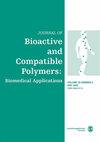A comparative study of gelatin-based nanofiber and sponge wound dressings
IF 2.1
4区 生物学
Q3 BIOTECHNOLOGY & APPLIED MICROBIOLOGY
引用次数: 0
Abstract
Gelatin is a collagen-derived biopolymer with high biocompatibility, commonly used in the production of wound dressing materials. Gelatin-based wound dressings, obtained through different processing methods, come with their own advantages and disadvantages depending on their physical structure. In this study, the effects of gelatin wound dressing materials with two different morphologies on wound healing are investigated in detail. The study investigated that the preparation of gelatin-based wound dressing materials using two different methods, followed by their chemical characterization and examination of their effects on biocompatibility and wound healing. To comprehend the impact of nanofiber structure and porous sponge structure on the wound healing process, the chemical structure of the prepared wound dressings was analyzed using Fourier Transform Infrared Spectrophotometer (FTIR). The morphological structure was visualized through Scanning Electron Microscope (SEM), the thermal properties were determined using Thermogravimetric Analyzer (TGA) and Differential Scanning Calorimeter (DSC). Additionally, the in vivo wound healing effects of gelatin-based wound dressings with different structures were evaluated through macroscopic observation and histological analysis in a dorsal region wound-healing rat model, monitored for 21 days. It was observed that wound healing materials with desired nanofiber and porous sponge structures were successfully obtained based on the SEM analysis. The gelatin nanofiber dressing showed a randomly oriented, bead-free, and smooth morphology with an average fiber diameter of approximately 1250 ± 0.35 nm, while the crosslinked gelatin sponge dressing had pore sizes ranging from 20 to 160 μm, and interconnected pore structures. The chemical structure remained unaltered according to FTIR graphs and these results were further supported by DSC and TGA graphs. Results from in vitro biocompatibility studies indicated that the wound dressing materials were biologically compatible, non-toxic, and did not cause irritation or sensitivity to the skin. Regarding in vivo analysis, it was determined that gelatin dressing materials were functional in the wound healing process, without the use of any auxiliary materials.明胶基纳米纤维和海绵伤口敷料的比较研究
明胶是一种源自胶原蛋白的生物聚合物,具有很高的生物相容性,常用于生产伤口敷料。明胶类伤口敷料通过不同的加工方法获得,因其物理结构的不同而各有优缺点。本研究详细探讨了两种不同形态的明胶伤口敷料对伤口愈合的影响。研究采用两种不同的方法制备明胶基伤口敷料材料,然后对其进行化学表征,并考察其对生物相容性和伤口愈合的影响。为了理解纳米纤维结构和多孔海绵结构对伤口愈合过程的影响,研究人员使用傅立叶变换红外光谱仪分析了所制备伤口敷料的化学结构。使用扫描电子显微镜(SEM)观察形态结构,使用热重分析仪(TGA)和差示扫描量热仪(DSC)测定热性能。此外,通过对大鼠背侧伤口愈合模型进行 21 天的监测,通过宏观观察和组织学分析,评估了不同结构明胶伤口敷料的体内伤口愈合效果。根据扫描电镜分析,成功获得了具有理想纳米纤维和多孔海绵结构的伤口愈合材料。明胶纳米纤维敷料显示出随机定向、无珠状和光滑的形态,平均纤维直径约为 1250 ± 0.35 nm,而交联明胶海绵敷料的孔隙大小在 20 至 160 μm 之间,孔隙结构相互连接。傅立叶变换红外光谱图显示化学结构未发生变化,而 DSC 和 TGA 图进一步证实了这些结果。体外生物相容性研究结果表明,伤口敷料具有生物相容性,无毒,不会对皮肤造成刺激或敏感。体内分析结果表明,明胶敷料在伤口愈合过程中具有功能性,无需使用任何辅助材料。
本文章由计算机程序翻译,如有差异,请以英文原文为准。
求助全文
约1分钟内获得全文
求助全文
来源期刊

Journal of Bioactive and Compatible Polymers
工程技术-材料科学:生物材料
CiteScore
3.50
自引率
0.00%
发文量
27
审稿时长
2 months
期刊介绍:
The use and importance of biomedical polymers, especially in pharmacology, is growing rapidly. The Journal of Bioactive and Compatible Polymers is a fully peer-reviewed scholarly journal that provides biomedical polymer scientists and researchers with new information on important advances in this field. Examples of specific areas of interest to the journal include: polymeric drugs and drug design; polymeric functionalization and structures related to biological activity or compatibility; natural polymer modification to achieve specific biological activity or compatibility; enzyme modelling by polymers; membranes for biological use; liposome stabilization and cell modeling. This journal is a member of the Committee on Publication Ethics (COPE).
 求助内容:
求助内容: 应助结果提醒方式:
应助结果提醒方式:


